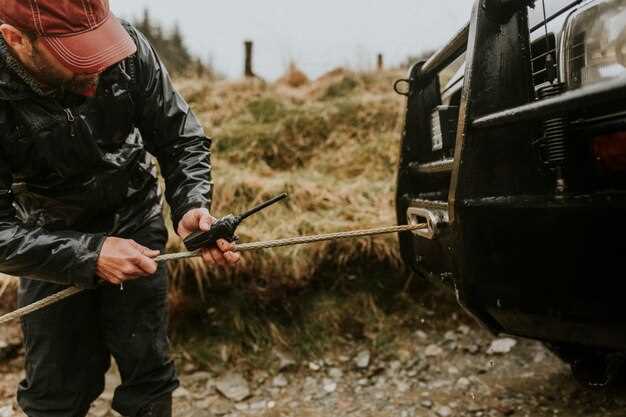Off-Road Driving Techniques for Jeep Owners


For those who revel in the thrill of adventure, off-road driving presents an exhilarating opportunity to explore the great outdoors. Jeep enthusiasts, in particular, are drawn to the rugged terrain where their vehicles can truly shine. However, navigating rough landscapes requires not just the right vehicle, but also a solid understanding of driving techniques and safety measures. This article aims to equip you with essential tips for off-road driving that can enhance your experience and ensure your safety.
Understanding the unique challenges of off-road driving is key to mastering this exhilarating activity. The unpredictable nature of the terrain can lead to situations that demand quick thinking and adaptability. Whether you are tackling muddy trails, rocky paths, or steep inclines, being well-prepared is crucial. Incorporating expert tips into your driving strategy can make all the difference, ensuring that your Jeep not only performs at its best but also survives the toughest conditions.
From assessing trail conditions to mastering specific driving techniques, this guide will cover a range of important aspects to consider before hitting the trails. By following these off-road driving tips, you can maximize your Jeep’s capabilities while minimizing the risk of damage. Let’s dive into the world of off-road driving and explore how to conquer various terrains with confidence and skill.
Choosing the Right Tire Pressure for Off-Roading

When it comes to off-road driving, selecting the right tire pressure is crucial for maximizing performance and maintaining control. For Jeep enthusiasts, understanding how tire pressure affects traction and vehicle dynamics can significantly enhance your off-road experience.
Lowering tire pressure increases the tire’s footprint, allowing for better traction on uneven surfaces like mud, sand, and rocky terrain. A typical recommended range for off-roading is between 15 to 20 psi, but this can vary depending on the type of terrain and the load your Jeep is carrying. Always consult your vehicle’s manual and consider the specific conditions you’ll be facing.
Additionally, be mindful of the potential risks associated with low tire pressure. While it can improve grip, it may also increase the risk of tire sidewall damage and reduce the overall handling of your Jeep. It’s essential to find the right balance between traction and safety.
After off-roading, remember to reinflate your tires to road pressure to avoid wear and maintain fuel efficiency on paved surfaces. Keeping a reliable air compressor with you can be a smart move to ensure you can adjust tire pressure quickly based on changing conditions.
In summary, adjusting tire pressure can significantly impact your off-road adventures. By taking the time to select the appropriate pressure for your tires, you can enjoy a more controlled, safe, and exhilarating experience on the trails.
Navigating Different Terrain Types with Your Jeep
When it comes to off-road driving, understanding the different types of terrain is essential for Jeep enthusiasts. Each environment presents its own challenges, and knowing how to adapt your driving technique can make all the difference in your adventure.
Sand: Driving on sandy terrain requires a unique approach. Lowering your tire pressure can enhance traction and prevent sinking. When navigating through dunes, maintain momentum and avoid sudden steering adjustments. Engaging four-wheel drive and using a gentle throttle can help you glide smoothly over soft surfaces.
Rock: Rocky trails demand careful maneuvering. Approach obstacles at a slow and steady pace, assessing the size and distribution of rocks. Use your Jeep’s clearance advantages to your benefit by positioning your tires strategically. Utilize rock crawling techniques, such as selecting low gear and applying power gradually, to navigate tough patches safely.
Mud: Muddy terrain can be tricky, but with the right tips, you can conquer it. Start with adequate tire tread designed for mud, as this will provide better grip. If you encounter deep mud, keep moving at a consistent speed and avoid stopping, which can lead to getting stuck. Engage four-wheel drive to distribute power evenly and reduce the chance of wheel spin.
Snow: Wintertime excursions call for adaptations in your driving style. Equip your Jeep with winter tires for improved traction in snow and ice. When driving in snowy conditions, maintain a lower speed, increase your following distance, and steer smoothly to prevent skidding. Utilizing four-wheel drive will provide better control on slick surfaces.
Gravel: Gravel pathways can be unpredictable due to shifting stones. It’s important to maintain a steady speed and avoid sharp turns that could lead to a loss of control. Carefully navigate through loose gravel by keeping your tires straight, which enhances stability. If in doubt, slow down and take your time to assess your surroundings.
By understanding how to adapt your driving techniques to various terrain types, you maximize your Jeep’s capabilities and enhance your off-road experience. Always remember to prioritize safety and be prepared for any challenges that nature may throw your way.
Essential Recovery Tools Every Jeep Owner Should Carry

When tackling off-road driving adventures, every Jeep owner should be prepared for unexpected challenges. Essential recovery tools are crucial for safely navigating difficult terrains and extricating your vehicle when it becomes stuck. Here’s a list of must-have recovery tools for every Jeep enthusiast.
First and foremost, a quality recovery strap is indispensable. Unlike tow ropes, recovery straps are designed to stretch, providing the necessary elasticity to help free a stuck vehicle without causing damage to either vehicle involved. Choose a strap rated for your Jeep’s weight to ensure proper performance.
Next, a set of traction boards can be a game-changer in off-road situations. These sturdy, portable tools can be placed under the tires to provide grip in mud, sand, or snow. Their lightweight design makes them easy to transport, and they can significantly simplify the recovery process.
A winch is another essential tool for off-road driving. Mounted on the front of your Jeep, a winch allows for self-recovery or can assist others in challenging situations. Ensure your winch has a sufficient pulling capacity and familiarize yourself with its operation before hitting the off-road trails.
For added safety, a shovel is a valuable piece of equipment. Whether digging out tires or creating a path through deep snow or mud, a sturdy shovel can be indispensable. Look for a collapsible design for easy storage within your Jeep.
Don’t overlook the importance of wheel chocks. These handy devices help prevent your Jeep from rolling during recovery operations. Use them in combination with other recovery tools to enhance safety during extrication attempts.
Lastly, carrying a recovery kit with gloves, safety gear, and additional accessories like shackles or D-rings can enhance your recovery efforts. This kit should be easily accessible and maintained so that you’re always prepared for off-road challenges.
By equipping your Jeep with these essential recovery tools, you can ensure a more enjoyable and safe off-road driving experience, even when unexpected situations arise.
